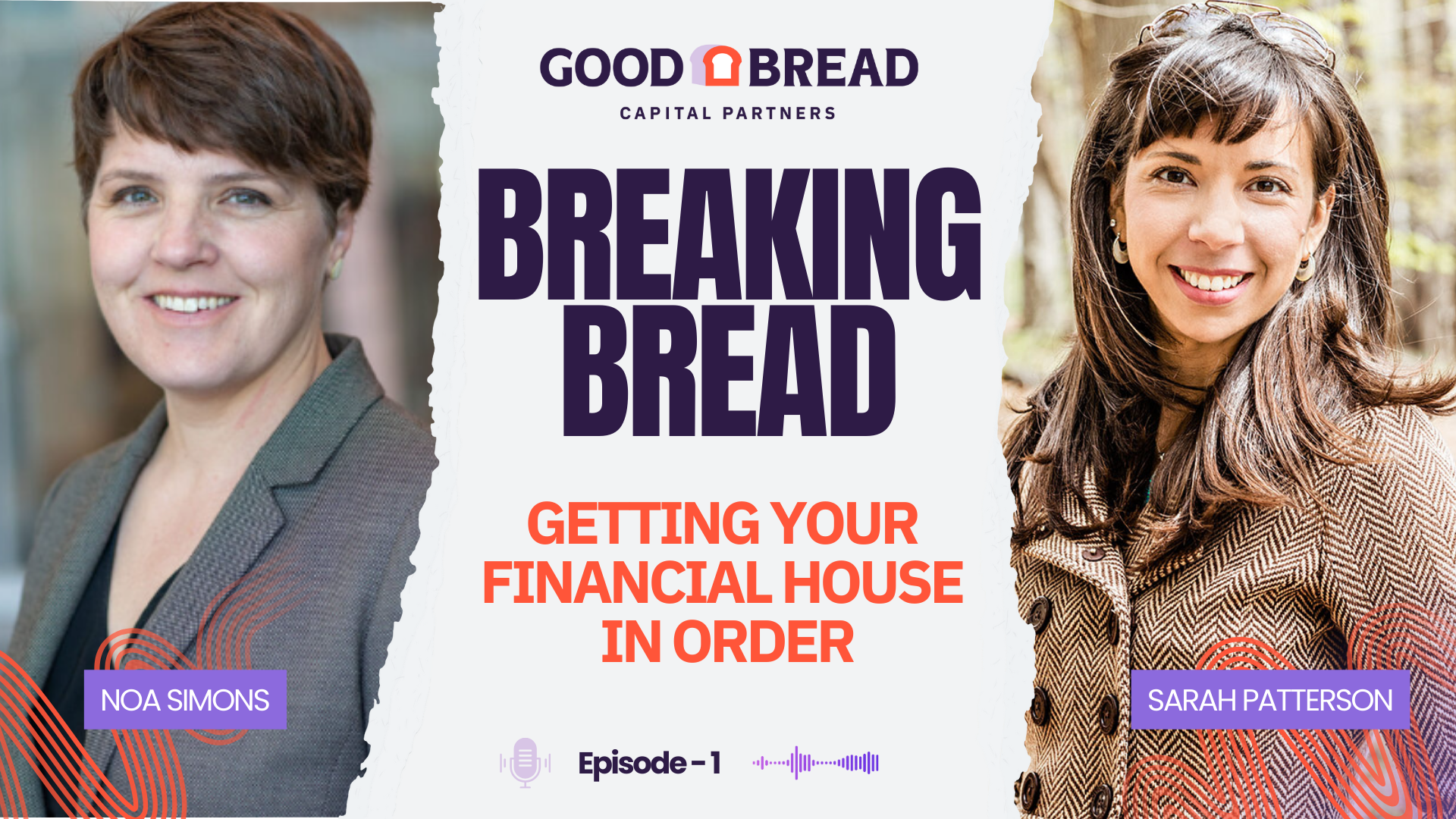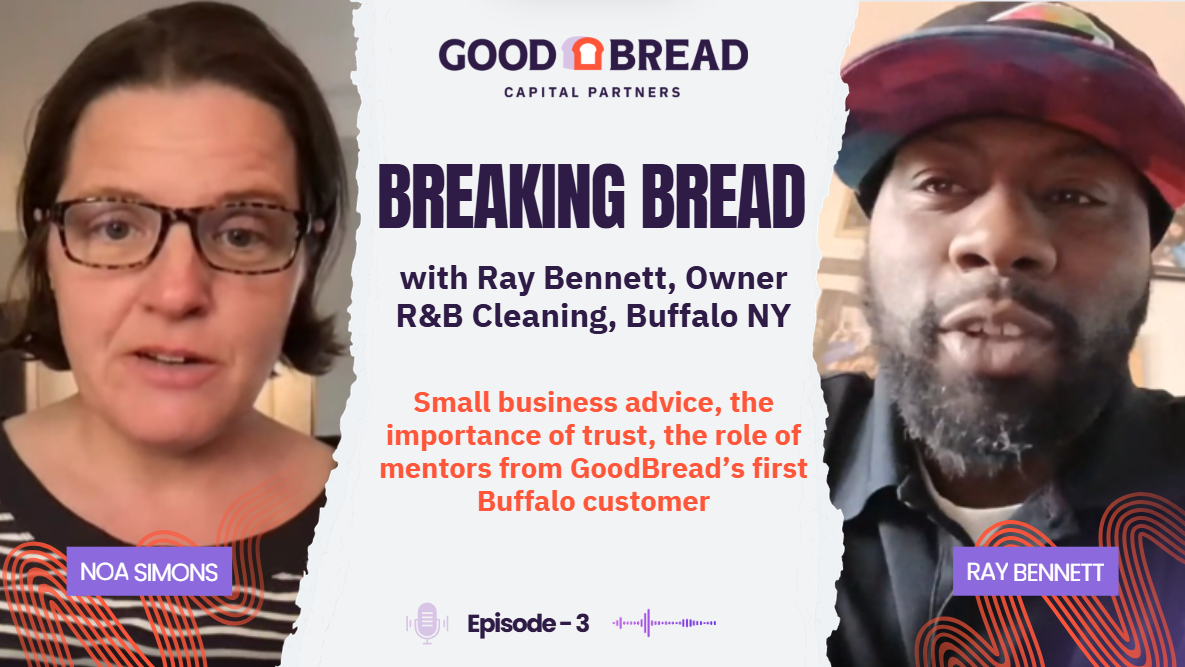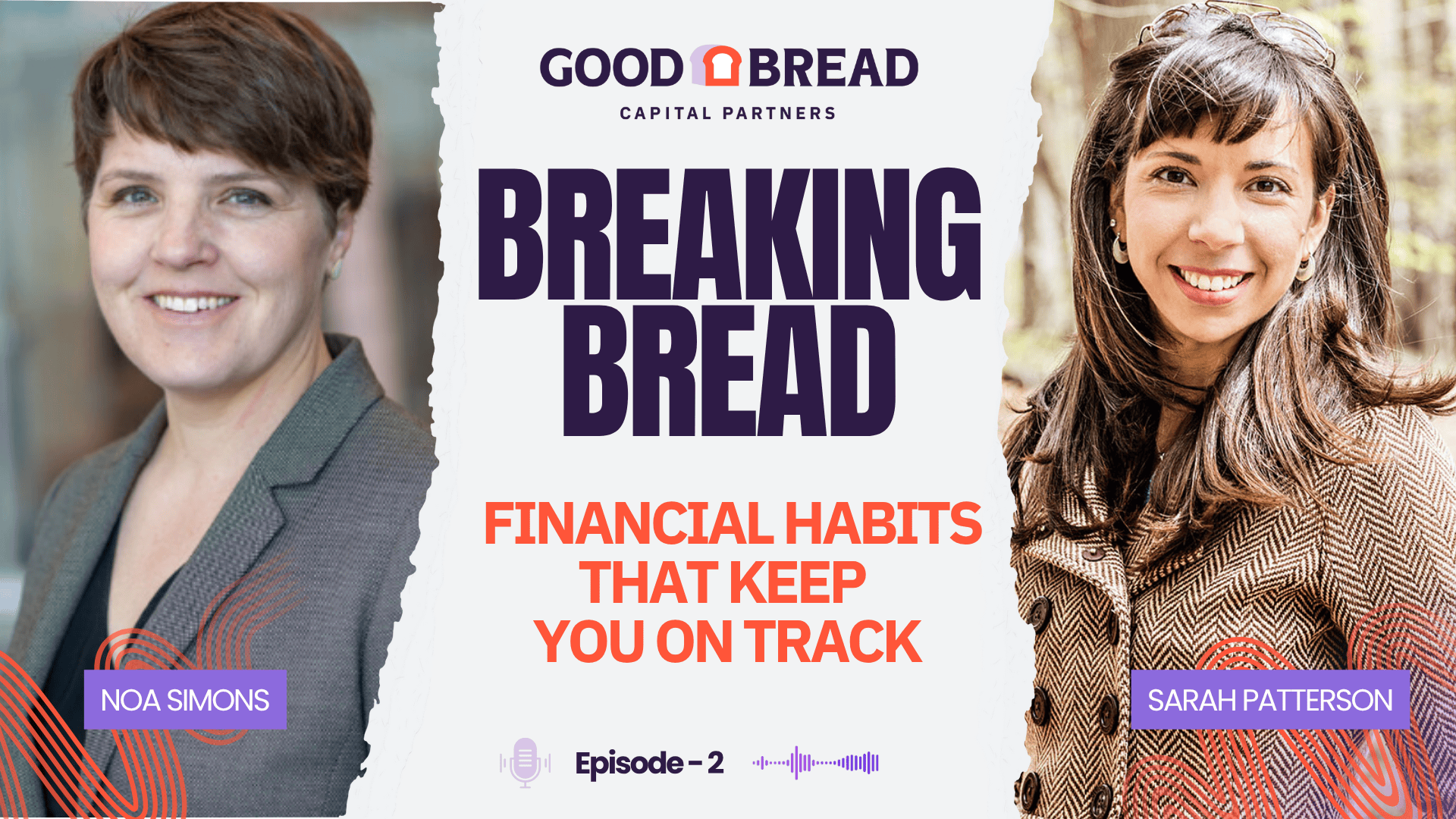Our first episode just dropped! We launched Breaking Bread, a podcast series where business owners and experts bring practical wisdom to the table.
For our very first episode, GoodBread’s CEO & Co-Founder, Noa Simons sat down with her friend Sarah Patterson, a fractional CFO who traded the corporate finance rat race in Boston for entrepreneurial freedom in the Hudson Valley by starting EssJay. She works with small and medium-sized businesses to make sense of their numbers and manage their businesses more strategically. The conversation centered on skills every business owner needs to manage the financial health of their business.
TL;DR: Sarah emphasized a few key concepts every business owner should know:
- The numbers on your P+L, balance sheet, and cashflow statements
- Budgets and forecasts, and why you need both tools
- How to think about building critical cash flow reserves for uncertain times
From Corporate Climber to Community CFO
Sarah’s path into small business finance wasn’t linear. After earning her degree in finance from UConn, she spent nearly a decade climbing the corporate ladder at Fidelity and in private equity. By 30, though, she realized something was missing.
“My soul had vacated my life,” she said with a laugh. So she left. After traveling for over a year, Sarah settled in New York’s Hudson Valley. That’s where she met a business owner who was losing sleep over financial management. He was great at sales, but finance wasn’t his skill set. Sarah stepped in—and discovered her calling.
One client led to another, and soon she was guiding agencies and service-based businesses toward financial clarity. “It fit what I was longing for—good work, good people, and real impact,” Sarah reflected.
Step One: Know Your Numbers
When Noa asked where a business owner should start, Sarah didn’t hesitate: “Know your numbers.”
That doesn’t just mean glancing at a profit and loss statement. Sarah explained that business owners need to understand all three financial statements:
- Profit & Loss (P&L): Shows revenue, costs, and profitability.
- Balance Sheet: A snapshot of assets, debts, and equity at a point in time.
- Cash Flow Statement: Reveals where money is actually moving—covering debt payments, taxes, and distributions.
Many entrepreneurs get tripped up here. “You can look at your P&L and think you had a great quarter, but your bank account tells a different story. That’s why you need the other two statements.”
Budgets vs. Forecasts
Talk to any entrepreneur about budgeting and you’ll hear some resistance. Some fear it forces spending, others don’t want to set a goal they might miss. Sarah’s perspective reframes it:
“A budget is a roadmap—it’s the picture of what you want your year to look like. But once the year starts, things change. That’s why you need a forecast.”
She recommends creating a rolling forecast each month—a living document that incorporates actual results and adjusts for new realities. That way, when sales dip, a customer leaves, or opportunities shift, you can respond quickly instead of being blindsided.
Noa noted that forecasting also strengthens a muscle over time: “The more you do it, the better you get at predicting your business.”
The Cushion That Saves You
Of course, the best planning in the world doesn’t matter if a business runs out of cash. That’s where reserves come in.
Sarah’s rule of thumb: aim for at least two months of operating expenses in cash, both inside the business and in liquid personal reserves. For businesses with more uncertainty—like seasonality or heavy reliance on a few big clients—three to six months is safer.
And when it comes to credit? “The best time to get a line of credit is when you don’t need it.”
She shared a story of a client who lost a major customer unexpectedly. Because they had reserves and a credit line already in place, they avoided layoffs and kept operations running smoothly. “You prepare for rainy days so when it pours, you don’t drown.”
Good Habits For Better Planning
Sarah believes financial health comes down to discipline and habits. Her advice:
- Review your numbers twice a month. Don’t just skim—ask whether the categories make sense.
- Stay close to your financials. Even with a bookkeeper, you know your business best.
- Measure consistently. Fraud, errors, and overspending are usually caught by attentive eyes, not software.
She recalled one client who only discovered months of credit card fraud after they started actually reviewing reports. “Bookkeepers categorize transactions, but they don’t always know what’s normal in your business. That’s your job.”
The Big Picture
Finances aren’t just math—they’re the story of your business. Understanding your numbers, forecasting with intention, and building cash reserves aren’t chores; they’re tools that give you freedom, peace of mind, and the ability to make bold decisions.
“The closer you are to your numbers, the faster you can catch what doesn’t smell right. And that’s what keeps a business healthy,” Sarah said.
This was only the first half of the conversation. In part two, Sarah and Noa will dive deeper into practical strategies for building resilience in uncertain times.
Join the Conversation
We’d love to hear your thoughts on this episode. Subscribe on YouTube, leave a comment, and share the video with your community. Together, we can keep building conversations that matter.






